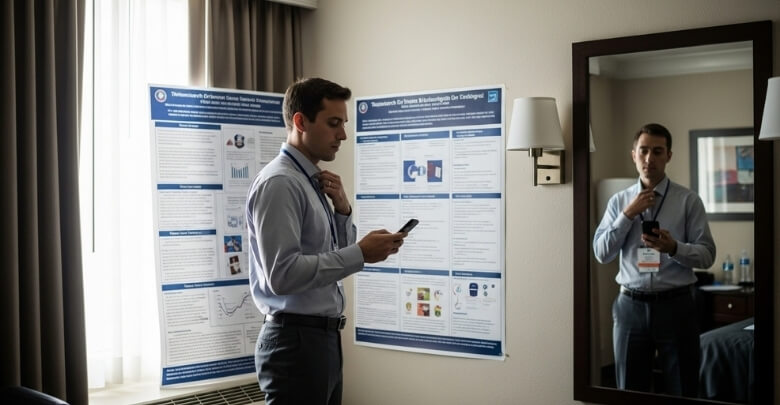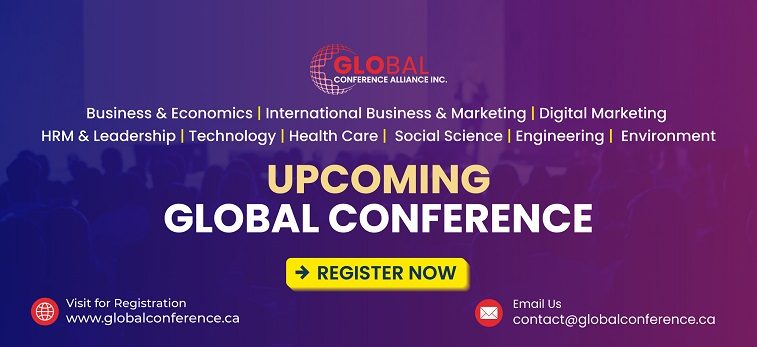Standing beside your poster, ready to share months of hard work, can feel both exciting and nerve-wracking. Many presenters worry about forgetting what to say or sounding unprepared in front of others. It’s a common question that could come to your mind before any big event: Do I have to memorize my poster presentation for a conference?
No, you don’t need to memorize every word. Just remember your main points and practice explaining them naturally. Let your poster guide your flow, and be ready to answer questions with confidence. Try preparing both short and longer versions so you can adapt to each visitor.
Keep reading to learn simple ways to sound confident, stay relaxed, and make your presentation memorable.
Do I Have to Memorize My Poster Presentation for a Conference?
No, you don’t have to memorize your poster presentation word-for-word. Instead, focus on understanding your key points clearly. Practice explaining your ideas naturally and confidently without reading from notes. This helps you sound relaxed, engage better with your audience, and handle questions with ease during your session. Let’s explore how you can present smoothly without trying to memorize your script.

Prepare Different Versions of Your Presentation
Every listener’s time and interest vary, so prepare short and long versions of your presentation. Create a quick two-minute overview to summarize your main findings clearly. Then, develop a longer five-minute explanation for people who show deeper interest. Practicing both versions helps you stay flexible and ready for any situation during the event.
When you rehearse these versions, focus on how smoothly you transition between topics. Avoid memorizing every word; aim for a conversational tone instead. This keeps your presentation fresh and engaging for everyone you meet. By knowing your material deeply, you’ll speak naturally, sound confident, and adapt easily to your audience’s curiosity.
Understand and Explain Your Data Clearly
Knowing your research inside and out gives you the confidence to explain it without hesitation. Spend time reviewing your data, methods, and results before the conference. Make sure you can describe each figure’s purpose and its connection to your main conclusion. Understanding your work well makes memorization unnecessary and boosts your credibility.
Practice explaining complex data in simple language that anyone can understand. Visualize your poster as a map guiding your explanation step by step. When you can connect your visuals to your key ideas naturally, your message becomes clear. This makes your presentation more relatable and enjoyable for different types of audiences.
Practice Your Elevator Pitch
Your elevator pitch is a short summary that introduces your research in under a minute. It should include what you studied, why it matters, and what you discovered. This short pitch is especially useful for busy conference attendees who stop by briefly. Practicing it ensures you make a strong first impression.
Rehearse until your pitch feels smooth and confident, but not robotic. Keep it friendly, concise, and easy to follow. Use natural language and clear transitions between sentences to hold attention. A well-practiced elevator pitch can open meaningful conversations and draw people to learn more about your poster.
Use Your Poster as a Visual Guide
Your poster is not a script—it’s a visual aid meant to support your explanation. Use it to highlight graphs, images, and key points as you speak. Pointing to visuals helps guide your audience through your research story clearly and effectively. This also allows you to maintain eye contact and sound more confident.
Avoid reading text directly from your poster, as it can make your delivery feel stiff. Instead, summarize the main idea in your own words. The more naturally you speak, the better your audience connects with your message. Great posters invite discussion, not memorized speeches.
Anticipate Questions and Prepare Confident Answers
Think about what questions attendees might ask before the conference begins. Write them down and practice clear, honest responses. Preparing this way helps you stay calm and handle surprises smoothly during the presentation. It also shows that you understand your topic deeply and are open to discussion.
When you practice answering, focus on clarity rather than perfection. Use short, complete sentences that explain your reasoning simply. Don’t worry about knowing everything—admitting uncertainty is fine if you explain what you plan to explore next. Confidence comes from preparation and genuine understanding, not memorization.
Arrive Early and Engage Naturally
Arriving early gives you time to set up your poster properly and settle your nerves. Check your materials, test your visuals, and organize your notes. This helps you start the day feeling prepared and confident. You’ll have more time to focus on connecting with people instead of worrying about setup issues.
During the event, smile, make eye contact, and be approachable. Start conversations naturally with attendees by asking about their interests. Whether it’s a conference in Canada, the United States, or other popular venues like the UK and Australia, the goal remains the same: connect and communicate effectively. Natural engagement makes your presentation more memorable and enjoyable.
Parts You Should Memorize in Poster Presentation for Conferences
Standing at your poster can feel exciting and a little stressful, especially if it’s your first conference. You don’t need to memorize every word to sound confident. What matters is remembering the right parts that keep your talk clear and engaging. Here are the main sections worth memorizing for a smooth poster presentation experience.
- Opening Introduction: Start strong by memorizing a short, clear self-introduction and your research topic. These first few lines set the tone and capture attention immediately.
- Elevator Summary: Prepare a one-minute summary that highlights your study’s goal, key findings, and why it matters. This helps you communicate quickly and clearly with every visitor.
- Transition Lines: Memorize short phrases that smoothly connect sections of your poster, like moving from methods to results. These lines make your explanation flow naturally and sound organized.
- Key Results: Keep your main data points and outcomes fresh in your memory for quick recall. Explaining numbers and findings confidently shows you understand your research deeply.
- Closing Statement: End with a short message about your study’s importance and what comes next. A clear ending leaves your audience with a strong takeaway.
- Question Responses: Think of two or three likely questions and memorize simple, direct answers. Being prepared for them builds confidence and keeps your delivery smooth.
What You Should Just “Know Well” Instead of Memorizing?
Standing beside your poster, you don’t need to repeat a memorized script to sound confident. What matters most is knowing your research deeply—the visuals, data, and story behind your work. When you understand these elements clearly and adapt to any conversation that happens during your session. Let’s look at what you really need to know well—not memorize word-for-word.
Understand Your Visuals
Your visuals are the heart of your presentation, so know what each figure, table, or graph represents. Be ready to explain why you included it and what story it tells. When someone points to a section, you should instantly recall its purpose and key finding. Familiarity with visuals helps you speak clearly without needing exact memorized lines.
Know Key Data Points
Memorizing numbers isn’t the goal—understanding their meaning is. Learn what each key data point shows and how it supports your conclusion. As part of effective conference short presentation strategies, focus on explaining your findings clearly instead of reciting them. When you highlight why each number matters, you build trust, engage listeners, and communicate with confidence.
Expect Common Questions
Every audience has patterns in what they ask, so think ahead. Prepare answers for likely questions about your methods, findings, or limitations. Knowing your work well allows you to answer calmly, even if a question surprises you. This kind of preparation makes you sound confident without needing rehearsed lines.
Internalize, Don’t Memorize
Internalizing means fully understanding your research story so you can talk about it naturally. Instead of reciting sentences, focus on how your sections connect and flow together. The goal is to explain your work like you’re telling a story, not reading a page. This approach helps you sound relaxed, authentic, and engaging.
How to Sound Confident and Natural During Your Session?
Feeling confident while presenting your poster doesn’t come from memorization—it comes from preparation, presence, and practice. Confidence grows when you focus on your posture, tone, and connection with the audience. Here’s how you can sound calm, clear, and natural during your conference session.
Stand with Purpose
- Keep your shoulders relaxed, spine straight, and feet balanced to project calm authority throughout your session. Good posture instantly boosts confidence.
- A solid stance keeps your energy grounded and prevents nervous movements that distract your listeners during your talk.
Use Open Body Language
- Keep your arms loose and gestures natural to make your message feel inviting and expressive. Avoid closed-off or stiff movements.
- Subtle hand motions emphasize points clearly and make you look approachable while sharing complex information with your audience.
Maintain Eye Contact
- Look at different people around the room to create genuine connections and hold attention naturally. It builds trust and engagement.
- Shifting your gaze smoothly among listeners makes them feel involved, helping reduce tension while keeping your focus balanced.
Relax Your Face
- A natural smile softens your presence and communicates warmth, helping your audience feel more at ease during the session.
- Avoid forcing expressions; stay genuine and let your enthusiasm reflect through your tone and relaxed demeanor.
Control Your Voice
- Speak clearly and vary your tone to emphasize ideas, keeping your words lively and easy for everyone to follow.
- Adjust your pace and volume naturally to highlight important points while maintaining an even, confident rhythm throughout.
Use Strategic Pauses
- Short pauses give you space to breathe, calm nerves, and emphasize ideas more effectively during your explanation.
- A moment of silence can feel powerful, allowing your audience time to process and absorb your message easily.
Avoid Filler Words
- Replace “um,” “uh,” or “like” with brief pauses or intentional breaths that maintain flow without distracting noise.
- Practicing your content often helps reduce verbal clutter and makes your speech sound smoother and more professional.
Rehearse Effectively
- Practice multiple times until you can explain your ideas without relying on notes or reading directly from the poster.
- Each rehearsal strengthens your confidence, helping you internalize your message and present naturally under any condition.
Manage Anxiety Smartly
- Take deep breaths before presenting to calm your mind and steady your heartbeat before beginning your session.
- Remember that everyone wants you to succeed; focusing on sharing your ideas helps shift attention away from nervousness.
Common Mistakes to Avoid in a Conference Poster Presentation
Standing by your poster is an exciting opportunity to share your work, but even small mistakes can affect how people perceive it. Many presenters overlook key details that make a big difference in confidence and clarity. Here are the most common mistakes to watch out for during a conference poster presentation:
- Too Much Text: Large blocks of text are tiring and discourage viewers. Use short, clear sentences and avoid overcrowding your poster with words.
- Tiny Fonts: Small text is hard to read from a distance. Use large, bold fonts to ensure readability from 1.5-2 meters away.
- Cluttered Layout: Overcrowding with images, charts, and text creates confusion. Maintain a clean design with white space to help viewers focus.
- Weak Titles: Unclear or boring titles fail to attract attention. Use bold, sharp, and concise titles that immediately draw people in.
- Distracting Colors: Using too many bright or clashing colors can make your poster look chaotic. Stick to two or three complementary colors for a professional look.
- Poor Visual Quality: Low-resolution or blurry images/charts reduce credibility. Use sharp, high-quality visuals with clear labels and captions.
- Ignoring Audience Interaction: Not engaging with viewers or avoiding questions makes the presentation awkward and misses networking opportunities.
- Blocking the Poster: Standing directly in front of your poster hides sections from others. Position yourself to the side while remaining approachable.
- Misreading Poster Size Requirements: Printing a poster that doesn’t fit the board looks unprofessional and wastes resources. Always double-check dimensions before printing.
Good poster design balances clarity, readability, visual appeal, and audience engagement to communicate your research effectively and leave a lasting impression. Reviewing examples of scientific posters can help you understand how professionals organize information and use visuals wisely. Preparing concise explanations, practicing audience interaction, and ensuring professional print quality together make your presentation stand out confidently.
Quick Tips to Help You Prepare for Your Poster Presentation for a Conference
Standing beside your poster at a conference can feel exciting and a little scary at the same time. You’ll meet new people, share your ideas, and talk about your hard work. It’s normal to feel nervous, but preparation makes everything easier. Let’s look at some simple tips to help you get ready and feel confident.
Know Your Topic
Before you start explaining your poster, make sure you understand every part of it clearly. Know what each chart, image, and result means so you can explain them in your own words. Don’t just read from the poster; try to talk naturally about what you did and why it matters. When you know your topic well, you’ll sound confident and relaxed while talking to others.
Practice Talking
The best way to feel comfortable is to practice your talk several times. Try explaining your poster to a friend, classmate, or even in front of a mirror. Practice short and long versions, so you can adjust based on how much time you have. The more you practice, the easier it becomes to remember your points and speak clearly.
Keep It Simple
Don’t use too many big or complicated words when you speak. Explain your ideas in a way anyone can understand, even if they don’t study your topic. Simple explanations show that you understand your research well. Remember, a clear message always makes a stronger impact than using hard words just to sound smart.
Use Your Poster Wisely
Your poster is there to help you, not to read word for word. Point to pictures, graphs, or sections while explaining so people can follow along easily. A clean, colorful poster with short text always works best. Use it like a visual guide that keeps your story interesting and easy to follow.
Be Friendly and Confident
When someone walks up to your poster, smile and make eye contact. Speak clearly and show that you’re excited about your work. Even if you feel nervous, take a deep breath and start calmly. Remember, people are there to learn from you, not to judge you. A friendly attitude makes a big difference.
Get Ready for Questions
People might ask about your methods, results, or what you learned from your research. Don’t panic if you don’t know every answer right away. It’s okay to say you’ll think about it or check later. The key is to listen carefully and answer politely—it shows respect and honesty, which people appreciate.
Stay Organized
Before the conference, double-check everything—your poster, name tag, notes, and any small items you might need. Arrive early to set up your poster and look around the space. This helps you feel calm and ready before people start visiting. Being organized helps you focus on sharing your ideas instead of worrying about small problems.
Frequently Asked Questions About Preparing for Poster Presentation at Conference
Presenting a poster at a conference can feel both exciting and nerve-wracking, especially if it’s your first time. Many presenters wonder what to do, how much to prepare, and what mistakes to avoid. Here are seven helpful FAQs to guide you.
How Much of My Poster Presentation Should I Practice?
Practice your presentation enough to feel comfortable explaining your research without reading. Focus on knowing your main points, transitions, and figures. Practicing a few times daily helps build confidence and keeps your delivery natural instead of memorized.
Should I Write a Script Before Practicing?
Writing a loose script can help you organize your thoughts, but don’t depend on it too much. Use it only as a guide to structure your talk. Practice explaining the same points in different ways to sound more natural.
How Long Should My Poster Explanation Be?
Prepare two versions—a short two-minute summary and a longer five-minute version. The short one works for quick visits, while the longer version suits deeper discussions. Being flexible helps you adapt to different people and situations easily.
What If I Forget What to Say During My Presentation?
If you forget something, stay calm and look at your poster—it’s your best reminder. Use visuals or graphs to guide your explanation back on track. Most people won’t even notice small pauses if you stay confident.
Is It Okay to Use Notes During a Poster Presentation?
You can use short notes with keywords or bullet points, but avoid reading them directly. Glance at them only if needed. It’s better to engage your audience through eye contact and body language instead of relying on written notes.
How Can I Make My Presentation Sound Natural?
Talk as if you’re explaining your project to a curious friend. Smile, keep your tone friendly, and use simple words. Focus on understanding your material deeply instead of memorizing it. Natural communication always feels more confident and engaging.
What Should I Focus On the Day Before the Conference?
Go over your main points, practice your short pitch, and check that your poster looks neat and complete. Pack everything you need, sleep early, and relax. Feeling calm and well-prepared helps you present smoothly and confidently during the session.
Bottom Lines
You don’t need to memorize every word to do well in your poster presentation. Confidence comes from practice, not perfection. When someone wonders, do I have to memorize my poster presentation for a conference, the real answer is no.
Just understand your work, speak simply, and share your ideas naturally. Use your poster as a guide and talk like you’re explaining it to a friend. Smile, stay calm, and enjoy showing what you’ve learned. Each time you present, you’ll get better and feel more confident talking about your research.







